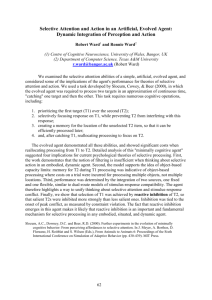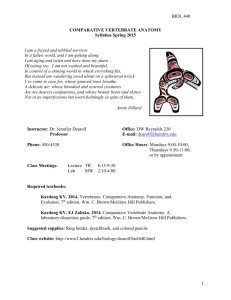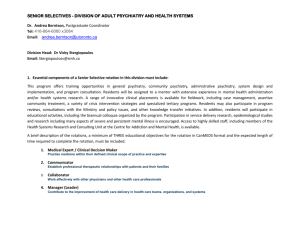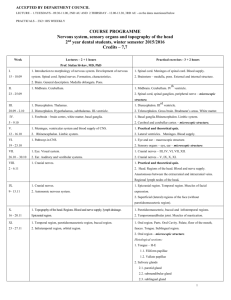Comparative Anatomy Webquest AP Biology, Great Valley High
advertisement
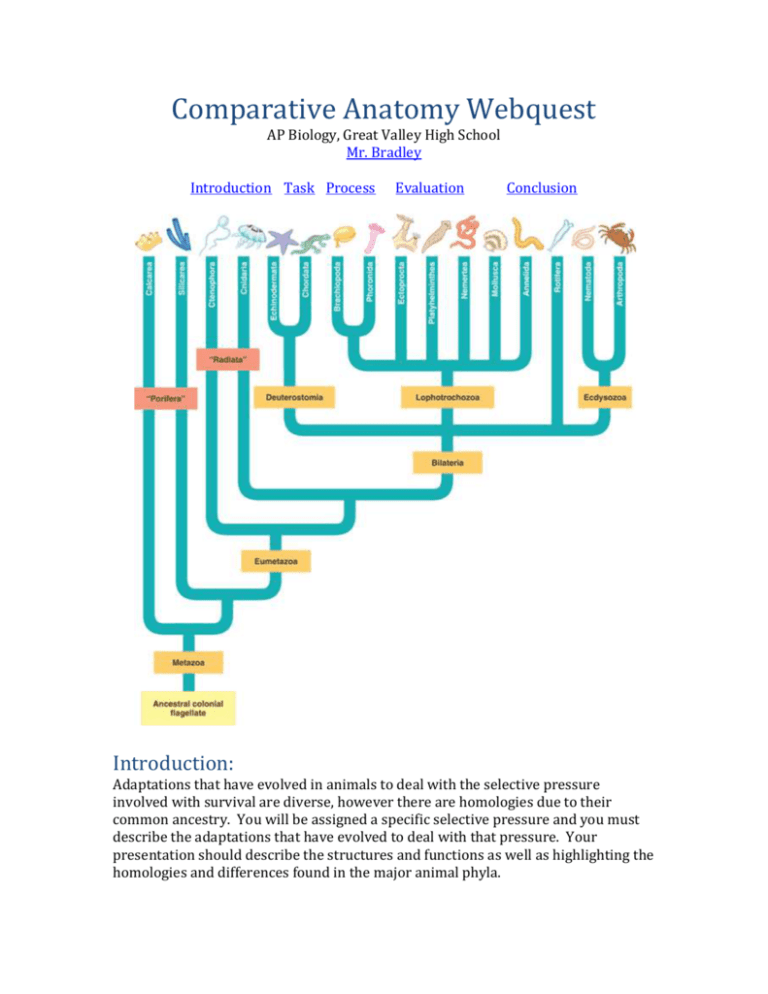
Comparative Anatomy Webquest AP Biology, Great Valley High School Mr. Bradley Introduction Task Process Evaluation Conclusion Introduction: Adaptations that have evolved in animals to deal with the selective pressure involved with survival are diverse, however there are homologies due to their common ancestry. You will be assigned a specific selective pressure and you must describe the adaptations that have evolved to deal with that pressure. Your presentation should describe the structures and functions as well as highlighting the homologies and differences found in the major animal phyla. Task: Each group of 3 or 4 will create a Power Point that describes the structures that evolved in animals to deal with the following selective pressures: Absorption of Nutrients Absorption of Gases Excretion of Wastes Support & Movement of the body Transport of materials to and from cells Sensing the external environment Each person must choose 1 animal clade (or specific animal) to highlight. The PowerPoint for the group will be inclusive of individuals’ work. A title page that gives an abstract of the project and group members’ names must be included. Individual slides must be clearly identify the author. The PowerPoints will be emailed to Mr. Bradley by Tuesday, May 18, 2010. Each person will present their information for 2 minutes and the group information will be presented for an additional 2 minutes (by a group designee) – total time no more than 10 minutes. Process: Each individual must develop at least 4 slides that Explain how the individual or group of animals deals with the selective pressure Identify and explain specific anatomy that has evolved in this group that deals with this selective pressure Resources: Comparisons of Animal Digestive Systems Comparisons of Animal Excretory Systems Comparisons of Animal Nervous Systems Comparisons of Animal Respiratory Systems Comparison of Animal Circulatory Systems Comparisons of Animal Muscular-Skeletal Systems Additional Resources are allowed for images, but you must verify information with your textbook. Cite outside sources! As a group, develop an additional 3 or 4 slides (1 per person in the group) that Explains the reason for the selective pressure Explains how anatomy in each group studied compare (1 or 2 people) Reasons why differences in anatomy have evolved (based on evidence, not speculation!) Resources: Tree of Life Web: Animal Phylogeny Animal Diversity Web (U of Michigan) Trends in Animal Evolution Evolutionary Trends in Mammalian Digestive Systems Evolution of the Nervous System Evolution of the Circulatory System Evolution of Osmoregulation and Excretion Evaluation: PowerPoint Grade (50 points) - Clearly meets the content criteria (30 points) - Each structure is illustrated with an images that is easy to see and major structures are identified (10 pts) - Slides are easy to read, no grammatical errors (5 pts) - Title slide contains required parts (2 pts) - Works cited slide contains any outside resources (3 pts) Peer Review (information that will be tested on Animal Physiology test) - Through the viewing of each presentation, take the following notes: o Selective Pressure Studied o Major Structures involved with this process matched with organism that carried it out. Conclusion: Homologous anatomy is a clear indicator of evolution in animals. What examples of homologous anatomy are evident in the other clades, like plants and protistans? What selective pressures direct the evolution of these groups?

